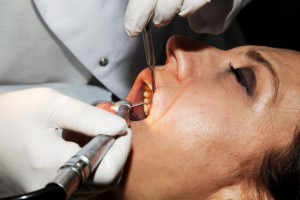 Your Houston Oral Surgeon Offers Anesthesia Options
Your Houston Oral Surgeon Offers Anesthesia Options
Years of experience in the dental field has taught me a lot about people. I’ve learned about our values, our common goals, and definitely about our fears. Let me tell you, no one likes going to the dentist–but too many people avoid the dentist for fear. Unfortunately, this often leads to more serious issues, that are then more painful to solve. It’s a bad cycle, and it needs to be broken.
If you have moderate to severe anxiety regarding the dentist, there’s good news for you. Today’s dental work isn’t your great-great-great grandfather’s dentistry: as anesthesia options continue to improve, chances are excellent that you won’t feel any pain at all. As you prepare for your upcoming procedure, it’s good to know which type of anesthesia is best for you.
At Piney Point, we use three types of anesthesia to ensure our patients are as comfortable as possible. The option your dentist recommends will depend on what’s being done, your age and, of course, your emotional state at the time of the procedure.
The most common type of anesthesia is a local anesthesia, which means the medication is injected into the nerves surrounding the target area. That means if we’re working on your upper right teeth, numbing will be limited to that area of your mouth. You’ll remain totally awake but feel no pain during the procedure, and the numb sensation may last for several hours after. This is an excellent option for simple procedures like cavities and extractions in patients with little anxiety.
If you need something more than a local anesthesia–maybe your nerves won’t let you sit still in the dentist chair, or if you have a considerable amount of work to be done–your oral surgeon may recommend intravenous anesthesia, or sedation, to help you relax completely. This is increasingly the most effective and popular option for patients with a fear of the dentist. With this option, you’ll have the medication injected into your arm to put you in a sleepy state. Under this type of anesthesia, you’re actually still awake, but totally removed from the surgery and will feel no pain at all.
The third choice, general anesthesia, is reserved for healthy patients in the office setting, and is a rare option these days. General anesthesia is what you think of when you think “surgery” — it puts you totally to sleep, so you remain unconscious for the duration of your procedure. Because sedation has proven so effective in helping to ease patient fear and anxiety, general anesthesia is generally reserved only for those with extreme anxiety, or for potentially trauma-inducing operations, like removing wisdom teeth that are covered in bone. We may also combine this option with IV sedation or general anesthesia to reduce anesthetic doses, while still allowing you to wake totally pain free.
No matter the anesthesia option you choose, you can breathe easy knowing we’re keeping a close eye on your blood pressure, respiration, heart rate and blood oxygen levels to ensure your safety throughout the whole process. Then, after the procedure, you’ll be able to come back to full alertness with a loved one seated next to you in our comfortable recovery room.
Call today
If dental anxiety is preventing you from seeing the dentist, don’t let it. Know your anesthetic options, and turn to Piney Point when you’re ready to ease your fears with an anesthetic option.

